Showing 1–10 of 78 results
The fascinating world of multiple Bharatas that this book introduces its readers with is that of a perennial tale discovered and created afresh at each juncture of time; at each moment of self-doubt and self-exploration; at each rejoicing of self-discovery and self-recovery. If one does not come across a seamless continuity here, one does not encounter apparent ruptures either. The Bharatas, as narrated here, present us with amazing diversity with palpable consubstantiality expressed in myriad forms and multiple hues; tradition belonging as much to its contemporaneity as to its past; belonging as much to the spokes as to the axle; centrifugal and centripetal at once; a tradition old and new at the same moment of time.
The book is based on the proceedings of a seven-day international conference organized by the Indira Gandhi National Centre for the Arts (IGNCA) on the living traditions of the Mahabharata in the year 2011. The conference explored the multiple tellings and retellings of the Mahabharata story as sung, danced, and celebrated in festivals, inscribed on to geographic landscapes, committed to memory as sacred genealogy, embodied in rituals, and sculpted in shrines and temples. The presentations ranged from issues of poetics and ethics to translations, adaptations, and variations to folk and tribal traditions as sung, recited, and performed. Rather than exploring the Mahabharata as a book or a singular narrative, these papers focus on the multi-tradition of the Mahabharata in all its multidimensionality, multiplicity, and above all, in its fluidity. The book would certainly interest the scholars engaged in the study of the living heritage of Indian epics, folklorists, indologists, and anthropologists.
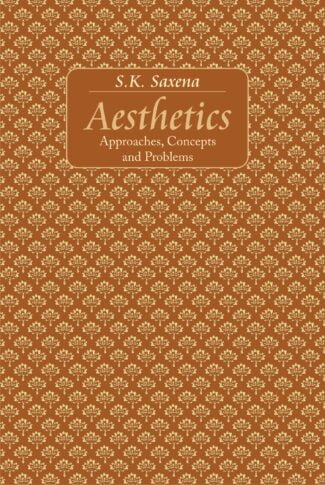
The book opens with a fairly detailed essay on aesthetics as it is today, and explains the main ways in which contemporary aesthetic thinking is being done, the basic concepts of aesthetics and theories of art. A detailed account of the Indian theory of rasa is also included in the volume.
This work may well be expected to serve as an introduction to the study of aesthetics, suitable alike to the needs of our students and the general reader. A fair part of it deals with some of the more difficult concepts and problems one encounters in contemporary Western philosophical discourse on art. At the same time, the book is studded with illustrative references to contemporary aesthetic practice in India. This is true of almost every individual chapter; and the close is provided by a critical and comprehensive, yet intelligible account of the Indian theory of rasa, to which some eminent Western aestheticians, such as Susanne K. Langer and Harold Osborne, have referred admiringly in some of their basic writings.
What should make this book specially attractive to enquiring readers is its consistent attempt to reflect on teasing aesthetical questions with clarity.

This is decidedly the very first book of its kind. It explains in simple Hindi (or rather Hindustani) the basic concepts and problems of contemporary Western (philosophical) aesthetics with apt illustrative references not only to Hindi (and even Urdu) poetry, but to Hindustani Sangeet and English poetry.
After its attainment of Independence, India has witnessed the quickening of a new life in the field of art as well. Cultural exchanges between its various regions have shown a marked upswing, and reflection on cultural matters has also increased beyond expectations. Concurrently, in quite a few of our colleges and universities aesthetics has been included in the syllabi as an optional subject of study. Some books on this subject, mostly written in the traditional way, are surely available; but philosophical aesthetics, which is today regarded as a distinct intellectual achievement of the twentieth century, still remains largely neglected in the field of Indian scholarship. What is worse, a Hindi book on this form of aesthetics has never been attempted before the present work.
It is precisely this need which this book seeks to meet fairly. With an eye to facilitate understanding of the basic concepts and related problems of contemporary aesthetics, the author has taken pains to give appropriate references, as illustration, to Hindi, Urdu, and English poetry, and music. This should make the book useful to students of both philosophy and music.
Its language is simple Hindustani; and the manner of writing is free from needless ambiguities. Readers in general should therefore find it not only easy to follow, but interesting as well.

This is decidedly the very first book of its kind. It explains in simple Hindi (or rather Hindustani) the basic concepts and problems of contemporary Western (philosophical) aesthetics with apt illustrative references not only to Hindi (and even Urdu) poetry, but to Hindustani Sangeet and English poetry.
After its attainment of Independence, India has witnessed the quickening of a new life in the field of art as well. Cultural exchanges between its various regions have shown a marked upswing, and reflection on cultural matters has also increased beyond expectations. Concurrently, in quite a few of our colleges and universities aesthetics has been included in the syllabi as an optional subject of study. Some books on this subject, mostly written in the traditional way, are surely available; but philosophical aesthetics, which is today regarded as a distinct intellectual achievement of the twentieth century, still remains largely neglected in the field of Indian scholarship. What is worse, a Hindi book on this form of aesthetics has never been attempted before the present work.
It is precisely this need which this book seeks to meet fairly. With an eye to facilitate understanding of the basic concepts and related problems of contemporary aesthetics, the author has taken pains to give appropriate references, as illustration, to Hindi, Urdu, and English poetry, and music. This should make the book useful to students of both philosophy and music.
Its language is simple Hindustani; and the manner of writing is free from needless ambiguities. Readers in general should therefore find it not only easy to follow, but interesting as well.
The book aspires to do for Indian poetics what Hudson’s book, An Introduction to the Study of English Literature did for English literature, though in a totally different manner and style. It provides the student with the essential knowledge about almost all aspects of Indian poetics. Based on the original Sanskrit sources, it presents the necessary information lucidly in precise and clear terms. Each chapter is self-contained and complete in itself, with explanatory notes, and a bibliography of relevant works. The Sanskrit terms used in the text are invariably explained or provided with English equivalents.
For quick reference, “A Glossary of Sanskrit Literary Terms” is given in the Appendices, which contain also “A List of Noted Indian Poeticians (including commentators) and Their Works” and “Notes on Major Texts in Indian Poetics”.
This handy volume, with its unique features, will prove invaluable to those who are going to embark on the study of Indian poetics, especially the ones who have no Sanskrit background. To a devoted student, it will prove a useful companion during his/her further studies.
The book aspires to do for Indian poetics what Hudson’s book, An Introduction to the Study of English Literature did for English literature, though in a totally different manner and style. It provides the student with the essential knowledge about almost all aspects of Indian poetics. Based on the original Sanskrit sources, it presents the necessary information lucidly in precise and clear terms. Each chapter is self-contained and complete in itself, with explanatory notes, and a bibliography of relevant works. The Sanskrit terms used in the text are invariably explained or provided with English equivalents.
For quick reference, “A Glossary of Sanskrit Literary Terms” is given in the Appendices, which contain also “A List of Noted Indian Poeticians (including commentators) and Their Works” and “Notes on Major Texts in Indian Poetics”.
This handy volume, with its unique features, will prove invaluable to those who are going to embark on the study of Indian poetics, especially the ones who have no Sanskrit background. To a devoted student, it will prove a useful companion during his/her further studies.
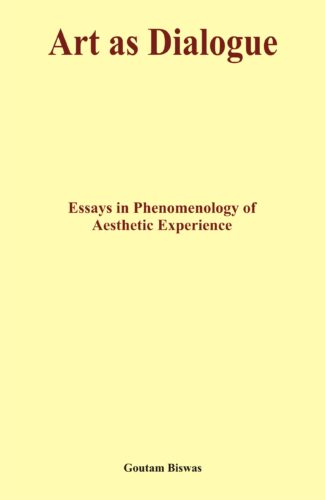
The original work presents a totally new methodology for understanding the concept of aesthetic experience through the medium of dialogue a dialogue between the subject and object, I and Thou.
This refreshingly original work presents a totally new methodology for understanding the concept of aesthetic experience. The traditional model of explaining this experience through the dichotomy of the creator, beholder or critic on the one hand, and the object of art, on the other is challenged and replaced by the new model which the author prefers to call dialogue a dialogue between the subject and the object, I and Thou. The epistemological and ontological methods which rely heavily on the bifurcation of the subject and the object fails to reveal the true nature of the experiential whole that forms the real core of aesthetic experience. The authors innovative methodology holds the promise for transcending the bounds of all such limitations and distinctions. Most significantly, the conception of art as dialogue is stipulated to work not as a means, but as an end, i.e., the consummation of art-experience itself. In this scheme the principle of relationship, not the substance, constitutes the reality of aesthetic experience and the model allows one to encompass within its scope the pre-linguistic, linguistic and trans-linguistic phases of the relationship between the man and the art. Dr. Biswas long training in Phenomenology and Existentialism makes his study of Martin Buber and Michael Polanyi lucid and stimulating. And his immense interest in Modern Indian Philosophy results in a superb analysis of Tagores and Radhakrishnans aesthetic approach
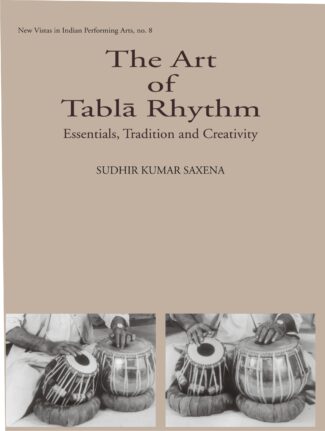
Beginning with the evolution of the Tabla, the book deals comprehensively with Tabla rhythm and explains the technique of producing the basic bols. It further describes the way to do reyaz on the Tabla, and explains the principal compositions that make up a standard Tabla recital. The CD accompanying the book carries samples of the Tabla of the major gharanas.
This authoritative work deals comprehensively with Tabla rhythm, focusing on the performed art with an eye to its history and aesthetics. It is aimed at the Tabla student, the Tabla performer, as well as the inquiring listener of Hindustani music, for whom it encapsulates a Tabla practitioner’s knowledge in these matters acquired over a lifetime of learning and teaching. Beginning with the evolution of the Tabla, the book explains the technique of producing the basic bols. It further describes the way to do reyaz on the Tabla, to maintain the instrument through changing seasons, and to raise and moderate its pitch, besides other practical directions. The author explains the principal compositions that make up a standard Tabla recital, and how they may be played in solo and sangat contexts. The major gharanas of Tabla are discussed critically, and their notated compositions are provided in both Roman and Devanagari scripts. The CD accompanying the book carries samples of the tabla of these gharanas recorded under the author’s direction, as well as demonstrations of compositions used as illustrations in the book. Grounded in traditional learning in Tabla rhythm, the book is written with a rational, empirical mind, and in a lucid manner all along which makes it accessible to a wide range of musicians and listeners.
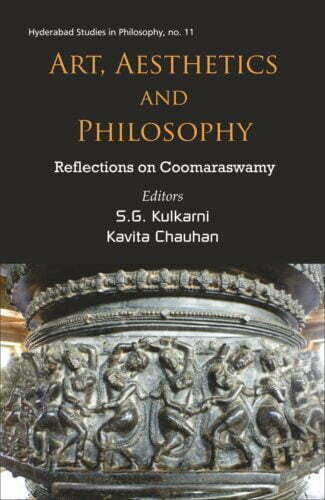
This book presents the varied reflections on Coomaraswamys personality as a philosopher, art historian, art curator and his strong positioning against the colonial teachings of Western art historians and philosophers on Indias art, civilization and culture, projecting an image of Indianness in every sphere.
The savants of the twentieth century have excavated the past to discerningly reveal the present. Swami Vivekananda, Rabindranath Tagore, Sri Aurobindo, Mahatma Gandhi and Ananda Coomaraswamy, among others, interpreted Indian aesthetics, civilization, culture and philosophy unearthing the Indian wisdom against the wrong interpretations and teachings of the Western colonial scholars. This volume, a collection of papers presented at a national seminar on the Philosophy of Ananda Coomaraswamy held in February 2011 at the University of Hyderabad, approaches Coomaraswamys philosophy on Indian aesthetics, life and religion from different perspectives.
The volume brings forth different facets of Coomaraswamy: as a catalyst in spiritualizing Indian arts; his views on modernism and anti-modernism; his efforts in aestheticizing India; his polemics of decolonization through art criticism; his aesthetical philosophy; his perception and understanding on art, culture and Indianness; his metaphysics; and his philosophical approach to visuals and materials from the lens of an art historian. It sketches Coomaraswamys multifaceted persona, enunciating that the crux of modern Indian philosophy is one of vision, rather than building theories.
In a nutshell this book presents the varied reflections on Coomaraswamys personality as a philosopher, art historian, art curator and his strong positioning against the colonial teachings of Western art historians and philosophers on Indias art, civilization and culture, projecting an image of Indianness in every sphere.
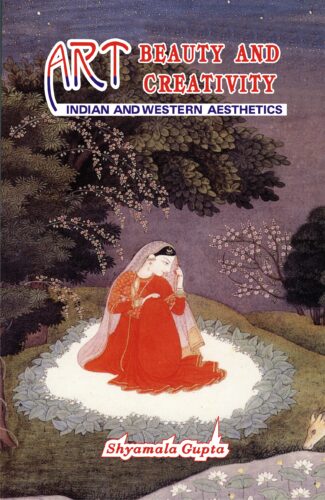
It studies the historical progression of aesthetics both Indian and Western since ancient times, focussing on the landmarks in the course of its development and theories on art, beauty and related concepts.
When the 18th century German philosopher, A.G. Baumgarten first introduced Aesthetics as an academic discipline to deal with the philosophy of beauty, he couldnt possibly have anticipated the controversies that have lately been raised by logical positivists, analytical schools, and even linguists -controversies questioning the validity, the very legitimacy, of a philosophical inquiry into beauty, art and creative processes. Notwithstanding the relatively more recent usage of the term proper, Aesthetics has a millennia-long history: beginning, in the West, with the old-world Greek philosophers, like Pythagoras, Plato, and Aristotle; and, in India, with the Vedic writings, more specifically, Bharata. Dr. Shyamala Guptas book is indisputably a painstaking effort trying to chart the historical progression of aesthetics: both Indian and Western -with focus not only on its evolutionary landmarks, but on its important concepts and theories as well. Schematically structured into two parts, Part 1 of the book examines the status of Indian aesthetics: its theories of rasa and dhvani, and, besides these, of its world- view of art. In its Part 2 are traced the development ofWestern theories of art and beauty, together with their attendant issues appearing, from time to time: from the days of ancient Greek philosophers to contemporary thinkers. Additionally, the authoress also tries to show how art is positioned vis-a-vis morality, science, sport and culture. A comprehensive, meticulously updated perspective on aesthetics, the book is sure to interest anyone concerned with the discipline: whether as a specialist, a student or a general reader.
| There are no products |